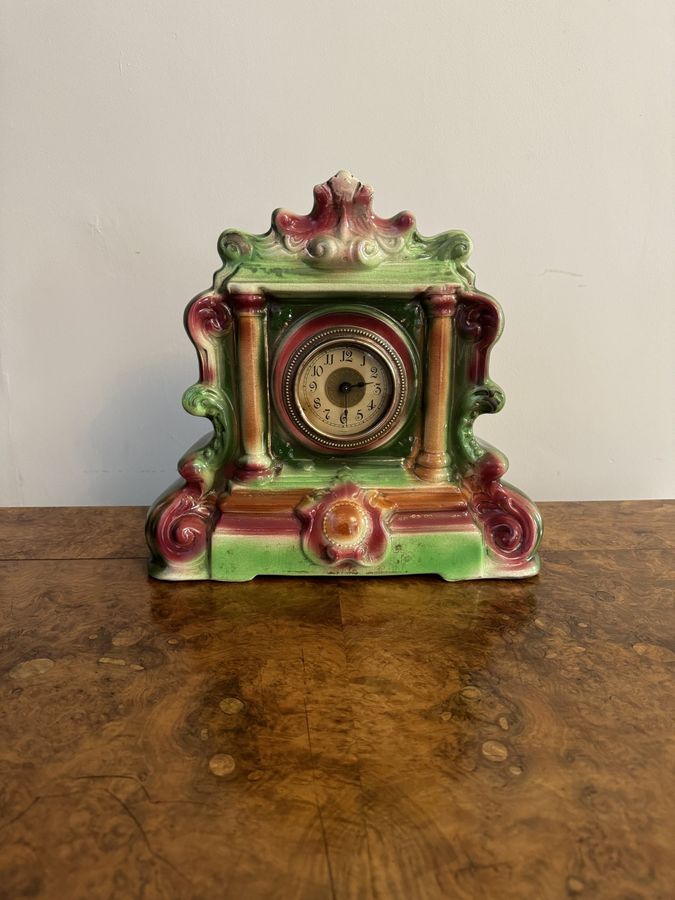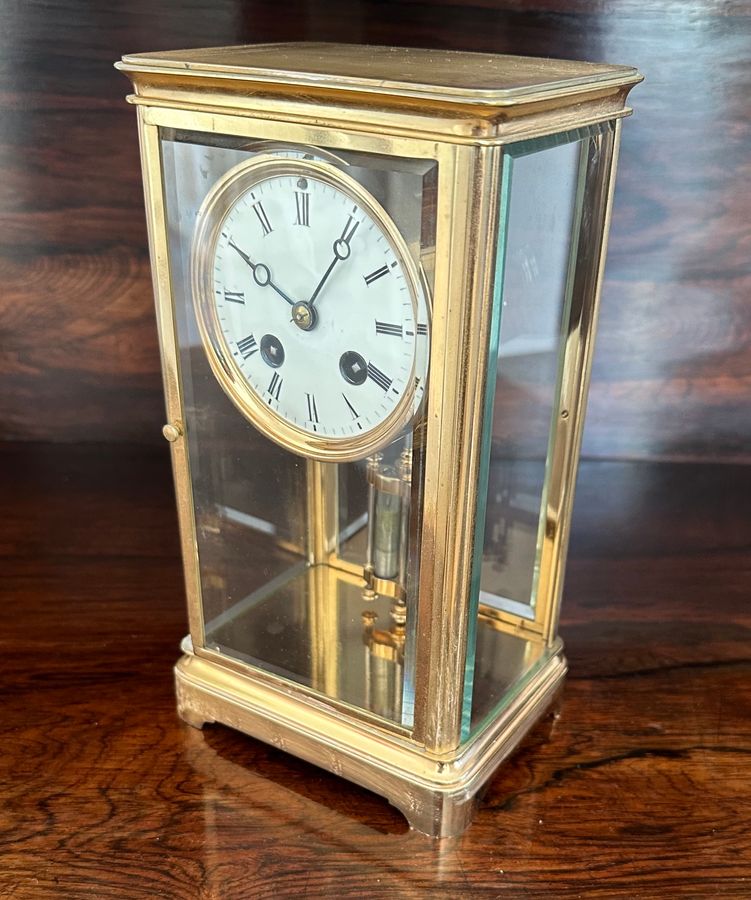bulle mantel clock

antiques available from other sellers in antique clocks > mantel clocks
-
![Antique Staffordshire mantle clock]() £345.00
£345.00antique staffordshire mantle clock Read more
Unique Antiques By Emma Jade -
![Mantle clocks]() £350.00Private seller
£350.00Private seller -
![Four glass mantle clock, circa 1900]() £550.00
£550.00four glass mantle clock, circa 1900 Read more
Frank Craig Antiques -
![A fine French Boulle mantle clock, circa 1860]() £1950.00
£1950.00a fine french boulle mantle clock, circa 1860 Read more
Frank Craig Antiques
- View other items in:
- antique clocks
- mantel clocks
Still not found something similar? Why not save a search and get a notification in your inbox when an matching antique is added to our ever-growing database?
Enter your email address to be sent alerts when new items are added to the site that match your search criteria

This rare early 1900s Bulle Clock from the Art Deco era was manufactured in the first half of the 20th century. It runs on one "D" battery. This battery should last around a year with a current draw of 325 Microamps measured on an oscilloscope during operation.
These clocks are very pleasant to watch as the operation is a fascinating combination of intricate parts that interlink and not only drive the hands but also create an electrical current in a coil. Due to Faraday's Law, when a current passes through the coil a magnetic field is created. This field then opposes the magnetic bar and the free pendulum receives an impulse. The clock also features delightful floral inlay detail on the case and finished at the bottom with Greek key inspired feet.
Bulle electric clocks were developed in France just prior to the Great War of 1914-1918. It was at time in the early 20th Century that there was a great deal of activity throughout Europe, the UK and USA in developing domestic clocks which would operate on battery power.
Two Frenchmen, working initially independently, on aspects of electric solenoids and clockwork mechanisms ultimately came together to create the Bulle clock. Professor Marcel Andre-Moulin gained a Science degree in 1904 and his Doctorate in Science in 1910. He became a lecturer in Chronometry at the Faculty of Science Bensancon and then was named Director of that Institute. By 1912 Andre-Moulin had developed the system of using a solenoid with a 3 pole tungsten magnet which, in 1914 he used to construct an electric clock.
Maurice Favre-Bulle was born in Bensancon, into a family of clockmakers. He studied at l'Ecole d'Horolgerie de Bensancon from 1885 - 1888 before joining his brother in taking over and running the family clock factory Favre-Heinrich. During the Great War Favre-Bulle worked at the engineering laboratories of the Faculty of Sciences of Paris, developing military timers, watches, timing systems and telegraphy.
At the end of the war Favre-Bulle joined with Marius Lavet to form La Societe Bulle et Cie, a company to develop prototype electric clocks.
In 1920 a patent was taken out by Favre-Bulle for an electric clock. The patentees were Favre Bulle and Madame Veuve Andre-Moulin, the widow of Marcel Andre-Moulin. The commercial exploitation of this patent followed.
In 1920 Compagnee Generale des Appareils Horo-Electrique was established to commence the commercial production of the Bulle clock.
During the period 1920 to 1952 production is estimated to have been some 300,000 clocks. All used the contact system as outlined in the original patent and over 100 different case designs were utilised.
As the years progressed the movement remained basically unchanged although new materials were introduced as they became commercially available, e.g. aluminium, Bakelite, chrome. Production was also started in England in 1934 and these clocks exhibited obvious differences to the French product, particularly in the direction of reducing the cost. This included lighter gauge metal, steel plate rather than brass, smaller half-arc magnets, etc.
Favre-Bulle died in April 1954, aged 84. Production ceased as he had no descendants and transistor control of electric clocks was imminent thus making the Bulle technology redundant.
- We are Time in Hand (Shipston) Ltd, established antique clock shop and restoration service for over 40 years based in the Cotswolds. All clocks are fully restored prior to delivery or collection. All clocks come with a 1 year guarantee.
We can deliver and set up clocks in person (up to a 60 mile radius) - arrangement to be agreed with customer prior to visit. Courier delivery also possible. For sales enquiries, email: sales@timeinhand.co.uk, for repair or restoration services, email mail@timeinhand.co.uk. www.timeinhand.co.uk.
Internal Ref: 3582
Antiques.co.uk Ref: M9AHAD35
- Maker/Artist:
- Bulle
- Width (cm):
- 24
- Height (cm):
- 23.5
- Depth (cm):
- 10.8
Here on antiques co uk we love antiques and specialise in selling antiques. Even though this item was for sale and is now sold or otherwise now unavailable we have many more items for sale including vintage antiques, silver, tables, watches, jewellery and much more for your interiors and home.
Search all the antiques currently for sale on www.antiques co uk. Or why not consider selling your antiques and making sales more easily with us!
time in hand (shipston) ltd
TIME IN HAND (SHIPSTON) LTD has 87 antiques for sale.
click here to see them all












